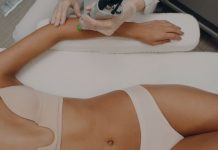Allergan Aesthetics’ Juvéderm Volux XC is now available at aesthetic practices nationwide.
The filler is approved for patients older than 21 with moderate to severe loss of jawline definition.
“With 40% of aesthetically-aware consumers considering treatment in the next year to their jawline or jowls with dermal filler, Allergan Aesthetics is excited to address this need by offering Juvéderm Volux XC , a specifically designed and well-researched solution,” says Carrie Strom, President, Global Allergan Aesthetics and Senior Vice President, AbbVie, in a news release. “As the category leader, we continue to innovate by providing aesthetic specialists and patients the broadest portfolio of differentiated fillers.”
Juvéderm Volux X is the newest member of the JuvédermCollection and offers a minimally invasive, non-surgical treatment option with minimal downtime. In a clinical trial, patients reported high satisfaction with the results of their treatment.
“Many different types of patients can benefit from JUVÉDERM VOLUX XC whether you want to address the appearance of jowls or the contour of the jawline,” says Sachin Shridharani, MD, a board-certified plastic surgeon in New York City. “With the addition of this new dermal filler to the JUVÉDERM Collection, I can create a smooth, natural-looking, and long-lasting contour that lasts up to twelve months with optimal treatment.”
David Shafer, MD, a double board-certified plastic surgeon in New Yorlk City and Allergan Medical Institute (AMI) trainer, agrees.
“The shape of the jawline has a profound effect on an individual’s appearance, which makes treating this area challenging and requires the practitioner to have advanced skills and precision,” he says. “With the approval of Juvéderm Volux XC, the AMI curriculum has expanded to include in-depth training, robust clinical trial data, and resources backed by science to ensure that providers have the proper knowledge and technique required to safely treat appropriate patients to meet their aesthetic goals.”
Commonly reported side effects in the clinical study included tenderness, lumps/bumps, pain, swelling, firmness, bruising, redness, itching, and discoloration at the injection sites, as reported in their 30-day daily diaries. These side effects are consistent with hyaluronic acid-based filler injections and were usually mild (causing little discomfort and no effect on daily activities) or moderate (causing some discomfort and effect on daily activities) in severity. Most of these side effects went away on their own within two weeks, the company reports.






